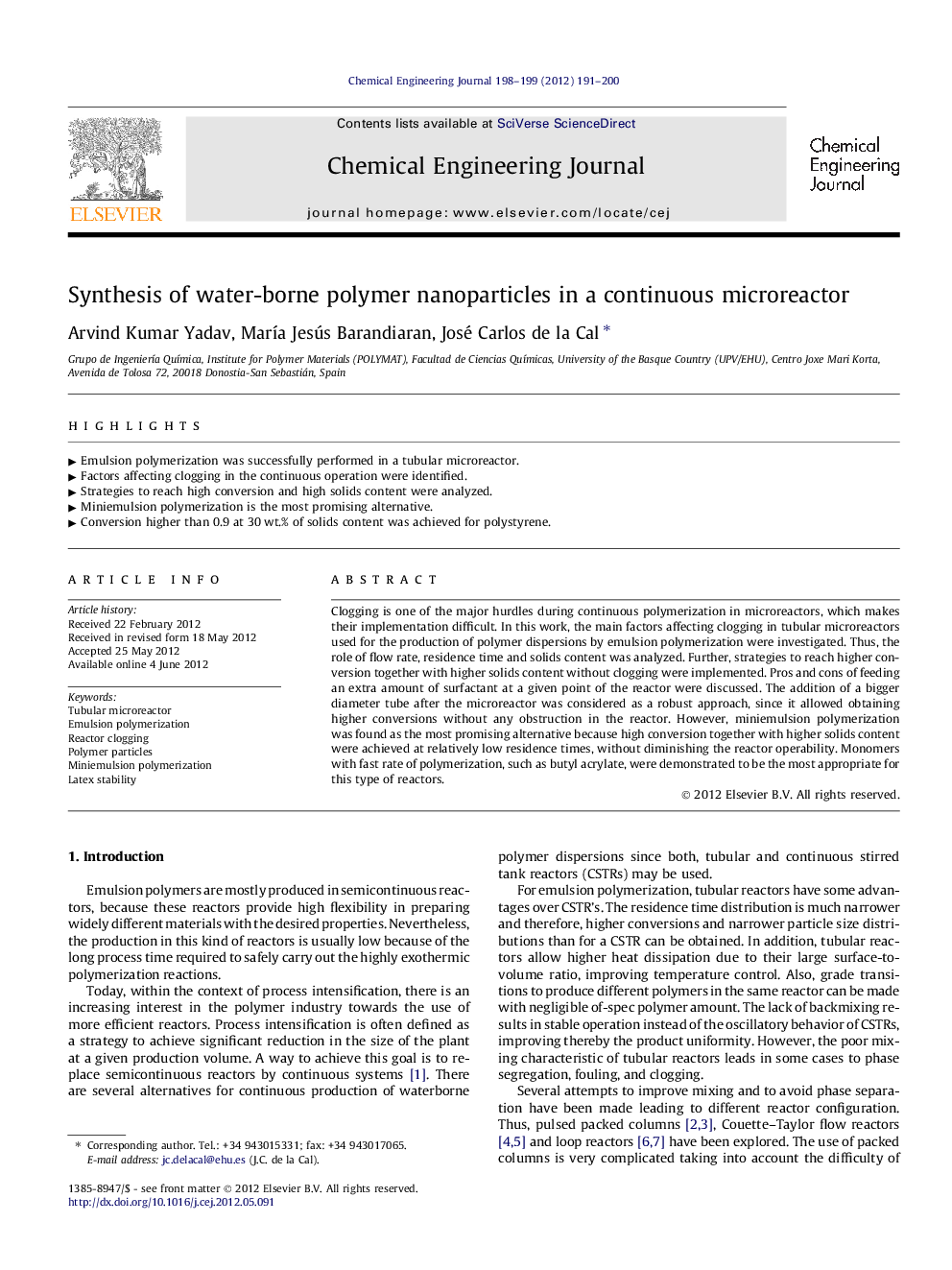| Article ID | Journal | Published Year | Pages | File Type |
|---|---|---|---|---|
| 149668 | Chemical Engineering Journal | 2012 | 10 Pages |
Clogging is one of the major hurdles during continuous polymerization in microreactors, which makes their implementation difficult. In this work, the main factors affecting clogging in tubular microreactors used for the production of polymer dispersions by emulsion polymerization were investigated. Thus, the role of flow rate, residence time and solids content was analyzed. Further, strategies to reach higher conversion together with higher solids content without clogging were implemented. Pros and cons of feeding an extra amount of surfactant at a given point of the reactor were discussed. The addition of a bigger diameter tube after the microreactor was considered as a robust approach, since it allowed obtaining higher conversions without any obstruction in the reactor. However, miniemulsion polymerization was found as the most promising alternative because high conversion together with higher solids content were achieved at relatively low residence times, without diminishing the reactor operability. Monomers with fast rate of polymerization, such as butyl acrylate, were demonstrated to be the most appropriate for this type of reactors.
► Emulsion polymerization was successfully performed in a tubular microreactor. ► Factors affecting clogging in the continuous operation were identified. ► Strategies to reach high conversion and high solids content were analyzed. ► Miniemulsion polymerization is the most promising alternative. ► Conversion higher than 0.9 at 30 wt.% of solids content was achieved for polystyrene.
